This year's AVUSI will feature a number of unmanned vehicles from underwater versions to aircraft
Bluefin Robotics Knifefish
In late 2011, Bluefin Robotics was awarded a subcontract through General Dynamics Advanced Information Systems to engineer and manufacture the Navy's Surface Mine Countermeasure Unmanned Underwater Vehicle. Dubbed Knifefish, the specialised Bluefin-21 UUV will fill the requirement as a main feature of the Littoral Combat Ship mission package. The company recently announced it had completed the preliminary design review for the system. Two Knifefish and their launch and recovery equipment will be featured on each ship. The contract holds options for up to 10 more UUVs.
 |
|---|
| Bluefin Robotics |
- Diameter: 21in
- Length: 16ft
- Weight (dry): 1,653lb
- Depth rating: 14,764ft
- Endurance: 25h at 3kts
- Speed: Up to 4.5kts
- Energy: 13.5-kilowatt hours
Boeing Insitu RQ-21 Integrator
Developed as a follow-on to the Boeing Insitu's ScanEagle remotely operated aircraft, the RQ-21 Integrator is expected to fill the US Navy and US Marine Corps' small tactical unmanned aircraft system (STUAS) tier II requirement. An initial two-year developmental contract was awarded in 2010.
The USMC is testing the small, unmanned machine in limited user trials in the Californian desert at 29 Palm. Two machines are currently being tested there. In USMC service, the Integrator will replace the Scan Eagle services that the marines have previously contracted. For the USN and USMC, the Integrator is particularly useful because of its ability to operate from ships. It is pneumatically launched and recovered via a 'sky hook'. The Marines have around eight aircraft, and plan to acquire 100 by 2017.
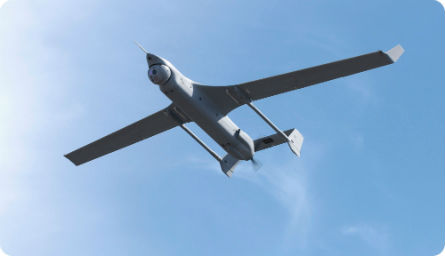 |
|---|
| Boeing |
- Wingspan: 16ft
- Weight: 135lb
- Endurance: 24h
- Max speed: 55kts
- Max altitude: >15,000ft
- Payload: 37.5lb
Boeing Phantom Eye
Developed by Boeing, the Phantom Eye is an experimental unmanned aircraft designed to fly at high altitude for extended periods of time. Unlike most unmanned aircraft, the Phantom Eye is powered by hydrogen gas instead of fossil fuels such as JP-8 or gasoline. The company claims that using hydrogen fuel makes the aircraft far more efficient than conventionally fuelled rivals. Uniquely, Boeing adapted Ford truck engines to power the aircraft.
The Phantom Eye first flew earlier this year at Edwards AFB, California, but while Boeing says most of the flight went smoothly, the aircraft made a hard landing. The aircraft suffered some damage, which upon visual inspection did not appear to be particularly significant. Boeing has traced the root cause of the crash to the design of the nose landing-gear.
Boeing has brought in F/A-18 engineers from St Louis, Missouri, to help fix the Phantom Eye's problems.
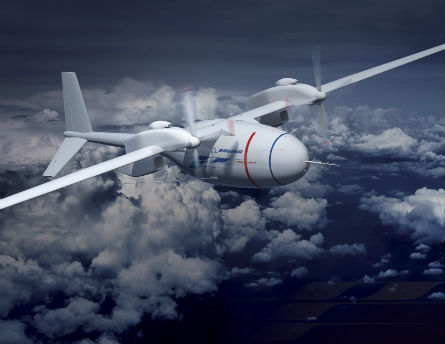 |
|---|
| Boeing |
- Wing span: 151ft
- Weight: >14000lb
- Endurance: 4-7 days
- Cruise speed: 150kts
- Max altitude: 65,000ft
- Payload: 450lb
Boston Dynamics RHex
Boston Dynamics recently demonstrated its RHex at the US Army's Robotics Rodeo 2012. Developed with funding from the US Army's Rapid Equipping Force, its movements are inspired by how a cockroach walks, but it also resembles a dog, complete with tail. RHex has six semi-circular legs, enabling it to climb stairs and other obstacles, and is weather-sealed to allow it to operate in mud and rain. RHex can be remotely controlled from up to 700 metres away.
- Weight: 27.5lb
- Length: 22in
- Width: 16in
- Height: 5.2in (legs not extended)
- Endurance: 6h
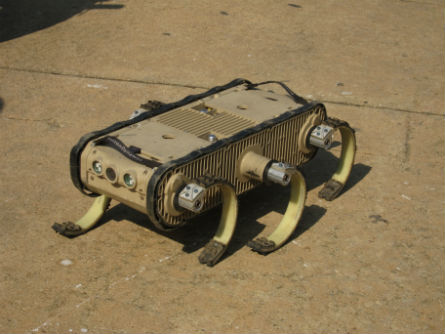 |
|---|
| Rhex |
DARPS/Boston Dynamics LS3
DARPA and Boston Dynamics developed the Legged Squad Support System, a four-legged, dog-like robot that uses computer vision to 'see' the path in front of it and follow a human through varied terrain, in 2012. The unmanned ground vehicle is modelled after Boston Dynamics' Big Dog robot. Testing for the LS3 included hauling 400 pounds of payload across a 20-mile track for 24 hours, all without refuelling. Testing started in July and is expected to run for 18 months. Although the final system isn't expected to be in the field with the warfighter for another four years, DARPA officials say that having a robot that can "think" at the level of a trained animal is something that could greatly benefit the military down the road.
- Payload: 400lb
- Range: 20 miles
 |
|---|
| Boston Dynamics |
FLIR SeaFLIR
FLIR makes infrared and other heat-sensing capabilities for the military and commercial customers. Its sensors have many practical applications, and have become part of the payload for both manned and unmanned systems.
In May 2012, the company announced that it received a $17.9 million delivery order from the US Navy Expeditionary Combat Command (NECC) for its SeaFLIR maritime imaging systems. The company says SeaFLIR is a long-range, gyro-stabilised, thermal imager that provides high-resolution infrared images in daylight as well as in total darkness. The Navy is expected to use it on patrol boats.
General Atomics Predator C Avenger
General Atomics' latest and most capable offering is the Predator C Avenger, a jet-powered and greatly upsized version of the iconic Predator. Two of the aircraft are making envelope expansion test flights, the second aircraft being more representative of a production model. Production has been ramped up to one aircraft every nine months, and while the US Air Force has purchased one for evaluation, General Atomics declined to say where the others may be headed. Several nations have expressed interest in the aircraft, and it is widely considered a frontrunner for a US Navy contest to build an unmanned combat aircraft.
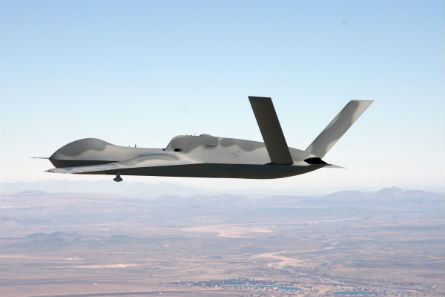 |
|---|
| General Atomics |
- Wingspan: 20.1m (66ft)
- Length: 13.4m (44ft)
- Weight (max): 7,167kg (15,800lb)
- Endurance: 20h
- Speed: 400kts
- Payload: 1,361kg (3,000lb)
Hanwha Smart Grenade RobotSouth Korea's Hanwha markets the Smart Grenade Robot, which lives up to its name; a rifle grenade can launch it as far away as 100 metres (328ft), conduct reconnaissance and surveillance with its onboard camera, and explode if needed.
- Weight: 25oz
- Speed: 20.5in/sec
- Control: Remote control
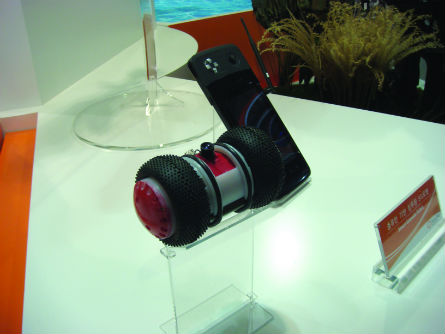 |
|---|
Hydroid Remus 600-S
Hydroid, a subsidiary of Kongsberg Maritime, released the Remus 600-S in April. A variant of the Remus 600, the 600-S incorporates Kongsberg's EM 3002 Multibeam Echosounder, which operates at 300kHz. It also comes equipped with the parent company's Navigation Processing Suite, which aids in vehicle timing accuracy and better syncs its onboard sensors and navigation software, according to Hydroid.
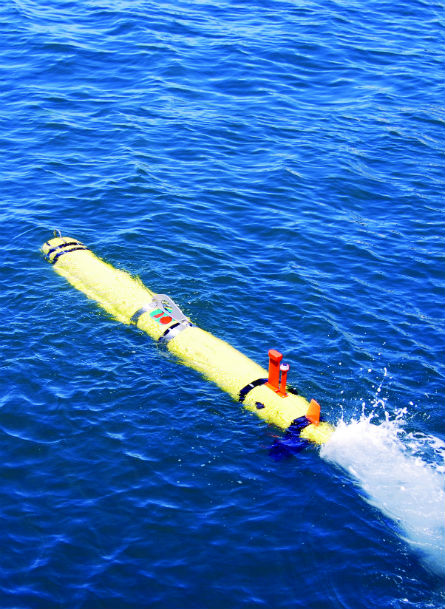 |
|---|
| Remus |
- Diameter: 32.4cm (12.7in)
- Length: 4.27m (14ft) (variable depending on module configuration)
- Weight in air: 326kg (718.7lb)
- Maximum operating depth: 600m (1,968ft) (1,500m (4,921ft)configuration available)
- Energy: 6.4kw
- Endurance: 24h at 3.0kts
IRobot 110 FirstLook
In March, the US military took the first order of iRobot's 110 FirstLook, a small, throwable robot that can be used for infantry and special mission operations such as raids and building clearing. The $1.5 million order from the Joint Improvised Explosive Defense Defeat Organization included 100 of the system, which can survive 15-foot drops and weighs 5.2 pounds. In the future, iRobot is looking to add two-way audio communication and digital mesh networking to the system's capabilities, which would allow multiple robots to relay a message across a longer distance.
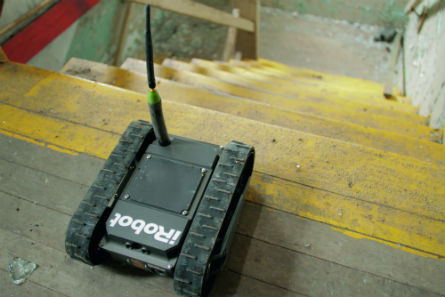 |
|---|
| IRobot |
- Weight: 5.3lb
- Height: 4in
- Length: 10in
- Width: 9in
- Speed: 4.9ft/s
- Line of sight communications: 656ft
IRobot Seaglider
iRobot released a new Seaglider unmanned underwater vehicle in late 2011 that was reconfigured with a larger set of fairings to increase the unmanned underwater vehicle's volume and payload. Operational at water depths between 20 and 1,000 metres (65.6 to 3,280.8ft), iRobot is developing an integrated radiation sensor, echo sounder and current profiler for the system. In a recent interview with AUVSI, iRobot chief operating officer Joe Dyer said the company has an 18-month to three-year technology roadmap for the system to expand its capabilities.
Length: 6.6ftWingspan: 3.3ftWeight: 115lb (dry)Operating depth range: 66 - 3,281ftMaximum travel range: 2,858miBattery endurance: Up to 10 months (mission dependent)
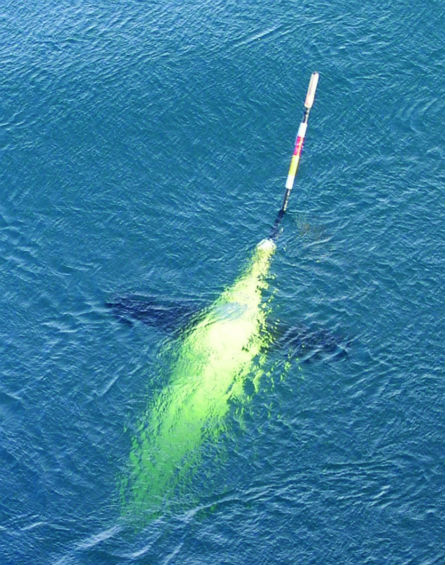 |
|---|
| IRobot |
Liquid Robotics Wave Glider
Liquid Robotics' Wave Glider had an award-winning year, breaking the record for the longest distance ever travelled by an unmanned wave-powered vehicle. Two systems set sail from the California coast, first reaching Hawaii and then separating to travel to Japan and Australia. The system also swam off the Maine coast in 2012 for test runs to collect data on tagged fish.
Float: 6.8ft x 2ftGlider: 1.3ft x 6.3ftWings: 3.5ft wideEndurance: 1 year (variable)Weight: 198lbWater speed: 0.4-2.0kts
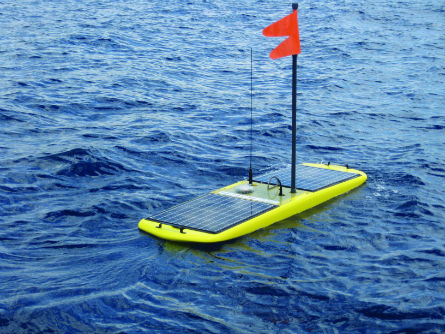 |
|---|
| Liquid Robotics |
Lockheed Martin Squad Mission Support System
Lockheed Martin's Squad Mission Support System is the largest unmanned ground vehicle ever deployed with US forces. It gained that distinction in late 2011, when two US Army units began evaluating the machines in Afghanistan after the system won the Army's Project Workhorse competition. The devices have been subjected to much abuse and have proven popular with the soldiers, Lockheed Martin says. The company has internally funded Block 0 and Block 1 variants of the SMSS, with the later models featuring smaller sensor packages and changes to make them quieter in the field.
- Weight: 4,000lb
- Payload: 1,000+lb
- Vertical step: 22in
- Range: 300mi on road, 200 mi. cross-country
- Gap: 27in
 |
|---|
| Lockheed Martin |
MacroUSA Armadillo
MacroUSA's Armadillo ground robot can be wheeled or tracked and has a 5-pound payload capacity. It can be dropped up to 8 feet or thrown as far as 33 feet and still conduct its mission. The system recently underwent a trial by the National Institute of Standards and Technology as part of a review of commercial, off-the-shelf technology. The Joint Improvised Explosive Defeat Organization plans to buy as many as 100 of them and is testing the robot in Afghanistan. Canadian robot maker Allen-Vanguard recently signed on as a distributor for MacroUSA's line of small unmanned ground vehicles.
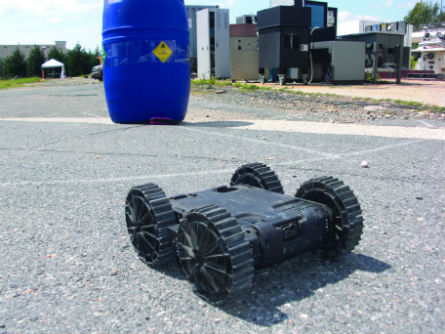 |
|---|
| Armadillo |
- Armadillo V3.5 Micro Ground Tactical RobotChassis height: 2.7in
- Wheel height: 5.3in
- Width with wheels: 11in
- Length with wheels: 13.2in
- Payload: 6.6lb
Mesa Robotics Acer
Mesa Robotics makes a family of small robots, including the Matilda II, the G2Bot and the Scorpion, all small robots that are at least luggable if not throwable - the smallest, the G2Bot, tips the scales at 11.3kg (24.9lb). But Mesa also makes a much larger robot, the Acer, a jack-of-all-trades bruiser that can carry cargo, defeat improvised explosive devices with a flail, clear roads with a shovel attachment, fight fires with a water tank and even serve as a landing platform for an unmanned helicopter.
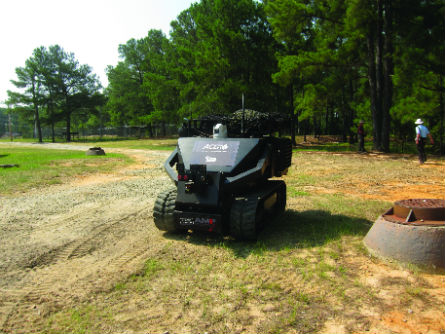 |
|---|
| Mesa Robotics |
- Length: 83in
- Width: 62in
- Height: 56in
- Weight: 5,000lb
- Payload capacity: 2,500lb
- Towing capacity: 25,000lb
- Top speed: 7mph
Northrop Grumman MQ-4C Triton Broad Area Maritime Surveillance
The US Navy officially rolled-out the Northrop Grumman MQ-4C Triton Broad Area Maritime Surveillance aircraft on 14 June, 2012 in Palmdale, California. The aircraft is based on the US Air Force's RQ-4B Global Hawk, but the USN variant has an airframe modified with better all-weather capability - the most important of which is wing de-icing. It is slated to become the first unmanned aircraft to receive an airborne sense-and-avoid capability.
For its maritime surveillance mission, the aircraft will be fitted with a 360° active electronically scanned array radar and a Raytheon MTS-B electro-optical/infrared camera ball. It also will have electronic support measures and an automatic identification system to track ships. By fiscal year 2019, the USN hopes to add a signals intelligence capability to the Triton.
The USN will eventually buy a total of 68 aircraft, but it will fly only 20 at any given time. That will be enough for five orbits around the globe, but the USN is considering placing the majority of those around the Pacific.
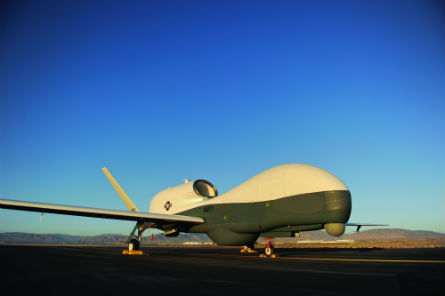 |
|---|
- Wingspan: 130.9ft
- Weight: 32,250lb
- Endurance: 28h
- Max speed: 331kts
- Max altitude: 56,500ft
- Payload: 5,600lb
Northrop Grumman MQ-8B Fire Scout
Despite several recent incidents, including the loss of one aircraft at sea and another to gunfire over Libya, the Northrop Grumman Fire Scout has emerged as the rotary wing unmanned aerial vehicle of choice for the US military, by far the largest customer of such aircraft. Seven are operationally deployed - three to northeast Afghanistan for land-based operations and four aboard the frigate USS Klackring, headed for the Horn of Africa. The prototype successor, FireX, which ports the same software onto a Bell 407 airframe, has begun flying again after a time on the ground. The US Navy expects to order 28 FireX's, although it has signed officially for only two thus far.
- Rotor diameter: 8.4m (27.4ft)
- Length: 7.3m (23.9ft)
- Weight: 1,428kg (3,150lb)
- Endurance: 8h
- Cruise speed: 115kts
- Payload capacity: 272kg (600lb)
Northrop Grumman X-47B Unmanned Combat Air System-Demonstrator (UCAS-D)
The objective of the US Navy's Unmanned Combat Air System-Demonstrator (UCAS-D) is to prove that a tactical fighter-sized unmanned aircraft with a stealthy platform can safely take-off and land onboard a USN aircraft carrier. The X-47B is also slated to demonstrate that such an aircraft can safely aerial refuel autonomously using either the USN probe-and-drogue system or the US Air Force's flying boom method.
The X-47B started flying last year at Edwards AFB, California, and successfully completed initial flight trials at the desert base. Recently, the first of two demonstrators was moved to the Navy's flight test centre in Patuxent River, Maryland. For the next year or so, the aircraft will conduct carrier-suitability trials. The USN hopes to conduct its first carrier landing with the X-47B onboard the aircraft carrier USS Harry S Truman in about a year's time.
If the UCAS-D proves to be successful, the technology will form the basis for the USN's follow-on Unmanned Carrier-Launched Surveillance and Strike aircraft.
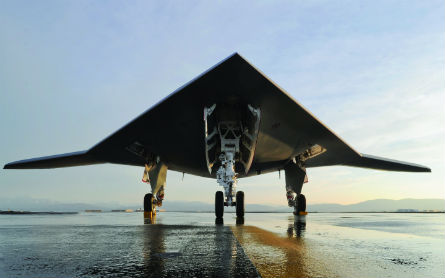 |
|---|
- Wingspan: 62.1ft
- Weight: n/a
- Endurance: n/a
- Max speed: high subsonic
- Max altitude: >40,000ft
- Payload: 4,500lb
QinetiQ North America Dragon Runner 10
Dragon Runner 10 joined the QinetiQ North America fleet of UGVs in 2011. Based on the design of the original Dragon Runner robot, this 'little brother' weighs in at less than 10 pounds, making it ideal for military and first responder use. Dragon Runner 10 is a throwable micro UGV, as QinetiQ engineers demonstrated last year at AUVSI's Unmanned Systems North America in Washington DC. Since then, the Joint Improvised Explosive Device Defeat Organization has ordered more than 100 of the systems in response to a Joint Urgent Operations Needs Statement for lightweight, throwable robots. The $5.3 million contract extended through spring 2012.
- Weight: 10lb
- Payload: 5lb
- Range: 2,130ft
- Max speed: 4mph
- Battery life: 2h, 6h with supplemental battery
RE2 ForeRunner
RE2's ForeRunner UGV, developed under a US Army small business contract, took the top prize for endurance at the Army's recent Robotics Rodeo, a competition sponsored by the Joint IED Defeat Organization. Its DS1-MA Manipulator Arm, designed for integration on MacroUSA's Armadillo ground robot, is heading to Afghanistan - JIEDDO is evaluating the DS1-MA/Armadillo combination as part of a Joint Urgent Operational Need requirement for a lightweight, throwable robot that can clear structures, perform reconnaissance missions and counter improvised explosive devices.
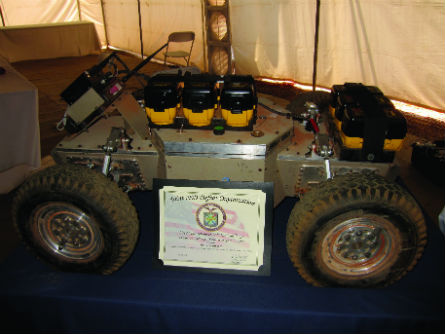
- ForeRunner:Length: 36in
- Width: 27in
- Height: 11.5in without payload
- Max speed: 25mph
- DS1-MA:Weight: 3.5lb
- Maximum lift capacity: 5lb
- Reach length: 7-9in
- Camera mast height: 11in
ReconRobotics Throwbot XT
ReconRobotics has thrown itself, literally, into global markets and smaller systems in the past year. In May 2012, the Minnesota-based company, which creates unmanned ground vehicles for military and commercial use, announced it was opening its first international headquarters in Lugano, Switzerland. The new subsidiary, known as RRI Global SAGL, will oversee all sales, marketing and customer service operations outside North America. ReconRobotics has also unveiled the new Throwbot XT Reconnaissance robot, which adds audio capability to the system, along with improved weatherproofing. Throwbot XT debuted at Eurosatory 2012 in Paris and is intended for military fire teams and SWAT personnel.
- Weight: 1.2lb
- Range: Can be thrown up to 120ft
- Payload: IR optical system and audio sensors.
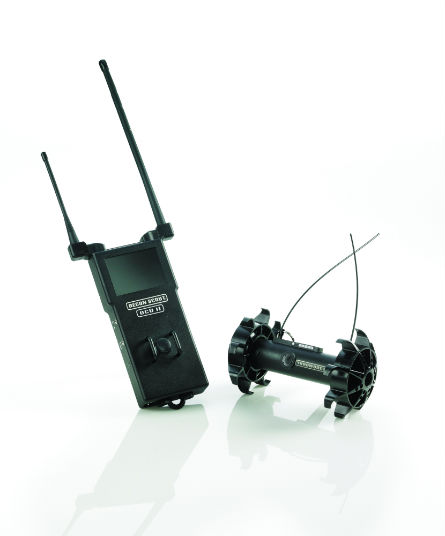 |
|---|
TORC Robotics GUSS
TORC Robotics' Ground Unmanned Support Surrogate vehicle, or GUSS, is an optionally unmanned and autonomous vehicle created in partnership with the Naval Surface Warfare Center Dahlgren Division and Virginia Tech. TORC's hardware and software were installed on an existing Polaris MVRS700 vehicle to make this possible. The US Marine Corps will use these vehicles. In 2010, the vehicles took part in the Marines' Rim of the Pacific war games.
 |
|---|
- Weight: approximately 2,185lb
- Payload: 1,800lb
- Ground clearance: 10in
- Turn radius: 186in
- Speed: 5mph
Source: Flight Daily News
















